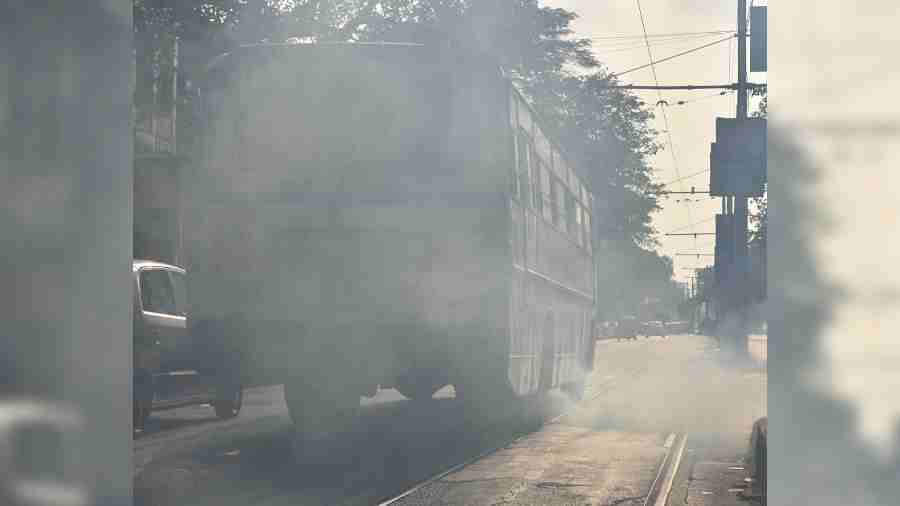An air quality monitoring cell, aimed at improving coordination between the Kolkata Municipal Corporation (KMC) and various departments of the government, is being set up at the civic headquarters.
The cell’s functions will also include putting in place mitigation measures in areas where air pollution is a major problem.
Kolkata’s air quality, especially the PM 2.5 levels, remain much higher than the permissible limits on many days in winter.
These particles that are less than 2.5 microns in size can enter the bloodstream and then go to any organ of the human body and negatively impact them.
The air quality begins to worsen as the temperature drops.
A senior official of the KMC said that engineers and officials of the civic body who now handle air quality management work have other responsibilities, too.
There is no dedicated team. The cell will appoint people who will work only in the sphere of air quality management.
The cell is also likely to find out sources of pollution and plan mitigation measures for areas in the city where air pollution levels remain high consistently over other areas.
“Improving air quality will require many organs of the government to work together. The transport department has to upgrade its fleet of vehicles. They are buying many electric buses. The state pollution control board runs air quality monitoring stations. Everyone needs the other to plan a comprehensive action. If there is lack of coordination, then work will suffer, which is why this cell is required,” said a senior KMC official.
Absence of coordination between various departments of government has been noticed several times in Kolkata.
In 2019, Chhath Puja devotees broke open gates and performed rituals inside the Rabindra Sarobar. The Kolkata Metropolitan Development Authority (KMDA) had then said calls to police officers were not answered when the group was breaking open the gates.
The temporary advertisements put up across the city during Durga Puja are done without anyone’s supervision. Police said that the KMC should look after the erection of the advertisements since they are the custodian of pavements, while the civic body says they have no responsibility since the advertisers are not required to pay any tax to the KMC.
Setting up the air quality monitoring cell is a condition under the National Clean Air Programme since Kolkata is one of the cities where air quality parameters are worse than the permissible limits fixed by the Central Pollution Control Board (CPCB), said an official of the state pollution control board.
Kolkata is one of the six cities in West Bengal where air pollution levels are higher than permissible limits. The other cities are Howrah, Barrackpore, Haldia, Durgapur and Asansol (including Raniganj). The KMC is also the nodal agency for distribution of central funds to other state government departments and other city municipalities for air quality mitigation work, said a KMC official.
Abhijit Chatterjee, an associate professor at the Bose Institute and an adviser to the KMC on air quality management, said the cell could conduct surveys to identify the sources of pollution in places where pollution levels are higher than others.
“Different places may have different reasons for air pollution. The cell’s personnel could be used for identifying the reasons and planning mitigation measures in those areas,” he said.
Post-Puja clean-up begins
The work of removing bamboo scaffoldings and temporary gates on different thoroughfares across Kolkata began on Monday.
Kolkata Municipal Corporation (KMC) and the Public Works Department (PWD) are responsible for removing these temporary structures on Kolkata’s streets that remained long after the festival, posing various hazards to pedestrians and motorists. The Telegraph had reported on Monday about the lingering nuisance. “We will clear up thoroughfares of bamboo structures and scaffoldings within aweek,” Debasish Kumar, mayoral council member in charge of parks and squares, said.
Work has begun along Rashbehari Avenue and in Sealdah, Behala and Shyambazar.
